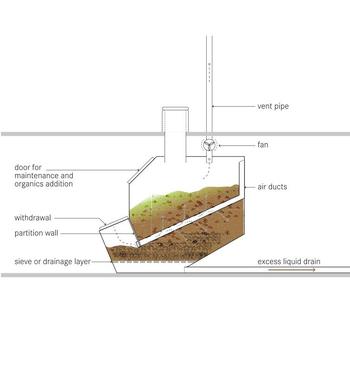Rather than the decomposition of the fecal sludge under anaerobic conditions in the pit of a pit latrine, decomposition under aerobic conditions can be promoted in an above ground (elevated) latrine. Air can be introduced through an opening to pass through the sludge and exit through the vent, while excess liquid is allowed to drain for collection or evaporation. With two adjoining composting chambers or vaults used alternately, the process of composting in an already full chamber can be allowed to proceed until the chamber is to be used again, and produce mature compost for direct re-use in the garden. Other household organic wastes (e.g. food wastes) can be added to the fecal sludge and materials such as newspaper or sawdust can be added to balance the carbon to nitrogen ratio for optimal composting. Because mature compost takes several months to produce under ambient temperatures, it is desirable for chambers to be sized with a capacity for at least 6 months of waste input. Worms can also be added to assist with vermi-composting. (UNEP 2000)
